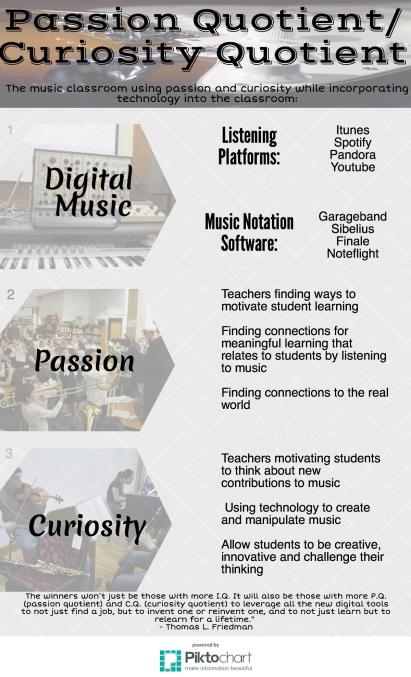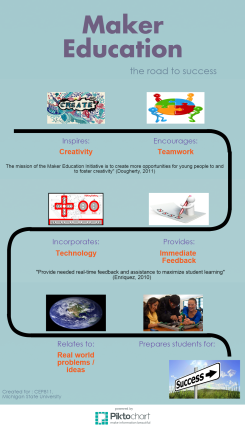For this final week in CEP811, we were asked to focus on ways to assess creativity in student learning. In most cases, creativity is not always part of a rubric. Incorporating creativity into assignments can provide many benefits to learning and understanding. As an educator charged with the assessment of student learning, I would assess creative problem solving during maker-inspired lessons in the following ways:
Student Involvement. Whether right or wrong, ideas can be beneficial and creative. Many maker projects allow students to work together. During this time, creativity can be assessed by student’s collaboration of ideas when problem solving. Working together and taking risks together can bring a variety of student’s imaginations that inspire them to go far beyond what they could if they were isolated.
Student/Teacher Assessment Rubric. The engagement among students and the teacher promotes a team-building learning environment as well as opportunities for creative brainstorming. Involving students in the assessment planning also provides better understanding for students regarding the expectations and outcomes. When students are involved in the planning, they will have better understanding of what the teacher will be looking for because they were already creatively involved in building the rubric.
Student Presentation. When students use maker kits, the end product is often quite engaging in itself however the reason behind their decisions may not always be quite clear. Having opportunities for students to present their work will allow their creative thinking to be expressed verbally as well as allow them to support their decision-making.
The design of these assessments is justified by the following connections to James Paul Gee, Eric Isselhardt and Grant Wiggins.
Gee stated in his video Grading with Games that schools will stress their ability to “solve problems, but not just to solve problems, but to do it collaboratively, where you can work in a group where the group is smarter than the smartest person” (2008). Having maker projects, or projects in general that promote collaborative learning will be beneficial to all students and will also provide differentiated learning.
The teacher-student assessment rubric can also be beneficial because it promotes student-driven learning. Isselhardt stated in his article that “Rather than acting as directive teachers, faculty members were more like coaches in a student-led inquiry environment” (2011). Although states require standards and benchmarks used in lessons, other areas of rubrics can be created by students and teachers together. This will allow better understanding on what should be included and promote a positive success rate because the students are the ones involved in creating the rubric.
Whether presentations are verbally presented or presented in a written format, students should have the opportunity to explain their work. Creativity can be incorporated in this area of assessment by the way in which students present their work. Presentations can often times be engaging or “boring” to students and teachers. “We don’t have to say “boring” but we should certainly say if the readers were not engaged, shouldn’t we? (Wiggins, 2012). Although student’s can write or present a good material, the way in which it is presented can be disengaging. Wiggins believes that “Yes, you get some points for content and process, but impact matters” (2012).
Overall, I believe there is valuable importance of assessing creativity in classrooms. Many classrooms often overlook creativity as they are too focused on the material and its parallel to standardized testing. Being creative is what allowed Benjamin Franklin and Albert Einstein to be successful and household names. Creativity can be implemented into every classroom for student growth and success however it takes a creative teacher to incorporate that into everyday learning.
References:
Gee, J. (2008). Grading with Games. Retrieved from https://www.youtube.com/watch?v=JU3pwCD-ey0#t=61
Isslehardt, E. (2013). Creating Schoolwide PBL Aligned to Common Core. Retrieved from http://www.edutopia.org/blog/PBL-aligned-to-common-core-eric-isslehardt
Wiggins, G. (2012). On assessing for creativity: yes you can, and yes you should. Retrieved from http://grantwiggins.wordpress.com/2012/02/03/on-assessing-for-creativity-yes-you-can-and-yes-you-should/







